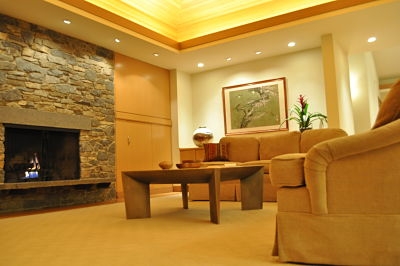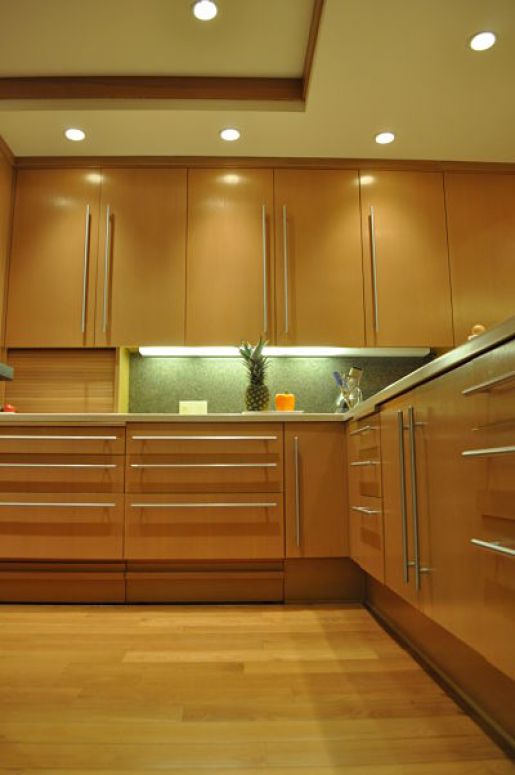You might also be interested in...
-
Aging eyes: Let there be light
08/30/2013
-
Abilities Expo puts people on the move
11/19/2012
-
American Home: New but not 'friendly'
03/24/2013
-
Barrier-free entry: Easy come, easy go
01/24/2011
-
Barrier-free floors: Getting even
01/08/2011
-
Book Review: The Accessible Home
05/31/2013
-
Book review: The Longevity Project
06/08/2011
-
Book review: The Roadmap to 100
06/01/2011
-
Book review: Unassisted Living
12/31/2013
-
Brick & mortar aging in place shop: Beverly's Daughter, Seattle
09/10/2013
Aging eyes: Let there be light
Posted: 08/30/2013
By: Lynette Evans

Black socks or navy blue? As we age, it becomes more difficult to tell. That's because aging eyes not only lose the ability to focus on the fine print but also the capacity to take in light. At 80, one's eyes may take in as little as 20 percent of the light they did at age 20, and even at 60, we may need several times as much light as we did in college to perceive the same details.
As he grew older, my father complained that his house was too dark. The house, built with floor-to-ceiling windows, was nevertheless shaded by large roof overhangs and giant evergreen trees. Windows along the hallway wore wooden privacy screens, and the sole skylight was more decoration than illumination. Moreover, the interior walls -- roughly planed grayish-stained cedar and gray native stone -- were non-reflective. They literally soaked up the light.
Light, therefore, was a major consideration in the design of my parents' new house, which not only takes advantage of daylight through large windows (sans extensive roof overhangs) and several skylights but is illuminated throughout by a mixture of incandescent, fluorescent and halogen light sources. (Were we building today, we'd use a lot of LEDs as well.)
Because dark colors absorb light, the walls in the new house were painted a reflective off-white color. Hemlock-lined cathedral ceilings in the living room (seen at top) and master bedroom provide architectural interest without stealing light, and the architect used native stone sparingly for fireplace facings in order to maximize aesthetic pleasure without making the rooms seem dark.
Even on the kind of gray days for which the Pacific Northwest is known, the kitchen is bright, with daylight coming from a skylight as well as through the wall of west-facing windows in the dining area, and is lighted at night with numerous in-ceiling can lights.
 Fluorescent strips beneath the upper cabinets (shown at right) spread task lighting to work surfaces in the kitchen, laundry room, closets and garages. With the exception of the fluorescents, all lights can be dimmed (some fluorescent lights are now dimmable), so that Mom not only had plenty of light while cooking dinner, for example, but could create a more amiable ambiance for dining with the flick of a dimmer switch.
Fluorescent strips beneath the upper cabinets (shown at right) spread task lighting to work surfaces in the kitchen, laundry room, closets and garages. With the exception of the fluorescents, all lights can be dimmed (some fluorescent lights are now dimmable), so that Mom not only had plenty of light while cooking dinner, for example, but could create a more amiable ambiance for dining with the flick of a dimmer switch.
Along with taking in less light, aging eyes can have trouble distinguishing planes, hence the need for contrasting floor and wall colors, visual cues on stairway treads and baseboard-level lights along hallways and stairways.
 To make it more comfortable for Mom to cook, we mixed counter materials (and colors), juxtaposing light-colored Corian work surfaces (right) with dark granite backsplashes. The granite is also used around the cooktop and on the raised serving counter, both of which are visible from the adjacent living area.
To make it more comfortable for Mom to cook, we mixed counter materials (and colors), juxtaposing light-colored Corian work surfaces (right) with dark granite backsplashes. The granite is also used around the cooktop and on the raised serving counter, both of which are visible from the adjacent living area.
The home office is lighted by a pair of halogen ceiling fixtures that give off enough light to facilitate doing the finest detail work but can be dimmed. Fluorescent tubes or halogen fixtures at mirrors supplement the incandescent ceiling cans in the bathrooms and dressing room.
 Along with the several windows, a skylight between the bedroom and bath and glass bricks (shown at right)bring daylight into the master suite. While the skylight and glass bricks assure the rooms are never completely dark, sheer draperies were purposely chosen to allow in some light and baseboard-level wall lights illuminate the path between bedroom and bath at night.
Along with the several windows, a skylight between the bedroom and bath and glass bricks (shown at right)bring daylight into the master suite. While the skylight and glass bricks assure the rooms are never completely dark, sheer draperies were purposely chosen to allow in some light and baseboard-level wall lights illuminate the path between bedroom and bath at night.
The wood-paneled cathedral ceiling is lighted by fluorescent tubes hidden in the soffit, and wall-washers provide illumination for Mom's family pictures on the walls.
 Bedside reading lamps are wall-mounted to prevent accidentally knocking one over, and conveniently located rocker-type switches next to the drapery control buttons operate the wall washers and soffit-mounted fixtures. All reachable from the bed, they help guarantee visual safety and comfort.
Bedside reading lamps are wall-mounted to prevent accidentally knocking one over, and conveniently located rocker-type switches next to the drapery control buttons operate the wall washers and soffit-mounted fixtures. All reachable from the bed, they help guarantee visual safety and comfort.
Useful resources:
Splitscreen images contrasting normal vision with that of people 60+ in a blogpost titled The Effects of Aging on Color Vision.